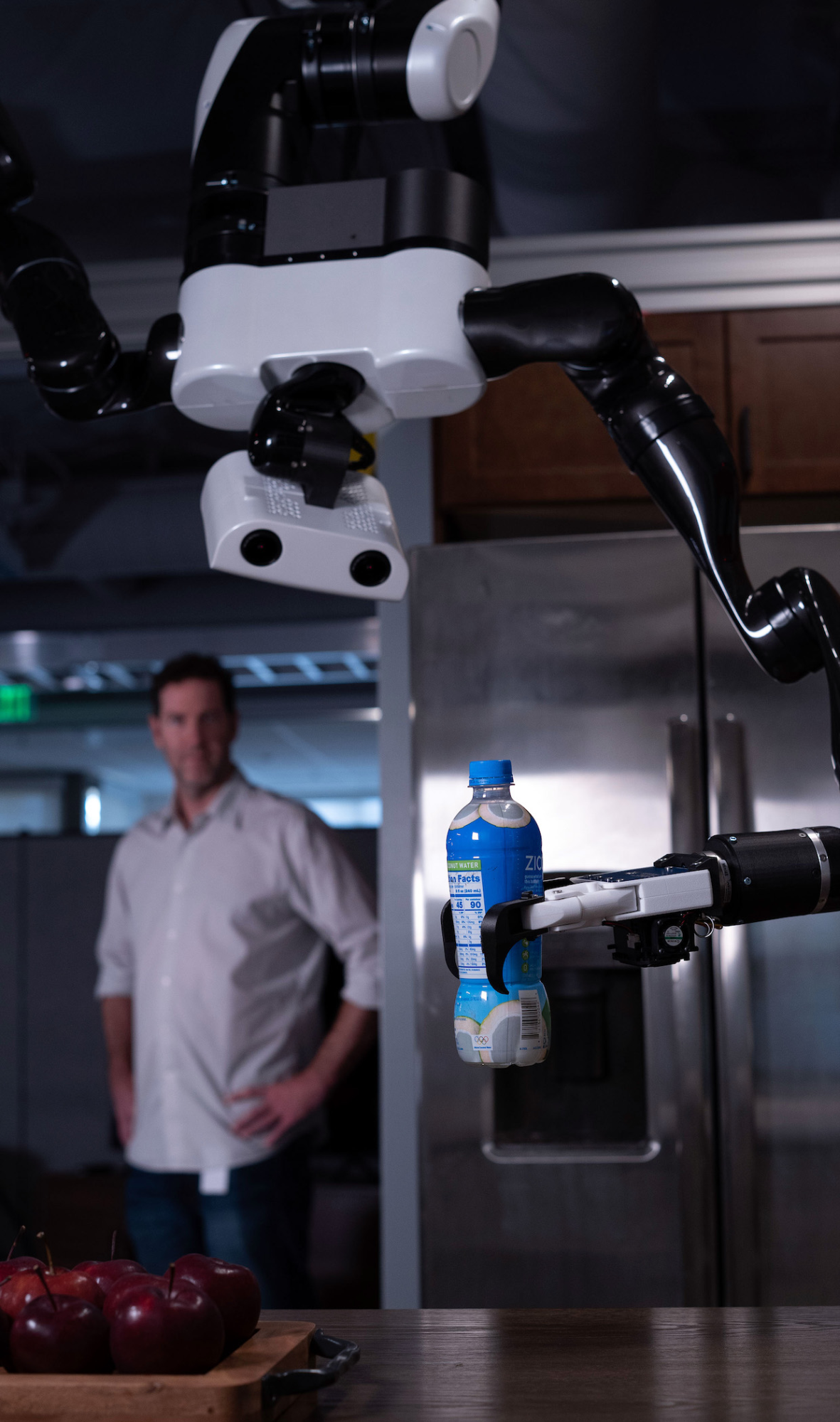
The Toyota Research Institute (TRI) has developed a robot designed to solve household problems of owners. This system outperforms household robots made by other companies. The TRI robot moves along the ceiling on special "rails".
The main purpose of TRI development is to solve the problem of serving an aging population. According to UN forecasts, in the next 30 years, the number of people over 65 will more than double. By 2050, more than 1.5 billion people will reach this age, which will greatly affect the economy, society and the distribution of the workforce. Toyota Assistant Robots will help seniors perform activities they cannot do on their own.

Why robots in everyday life?
Japanese scholars from TRI are guided by the philosophy of Ikigai (Jadoka). This is the idea of the highest meaning and purpose of every person on Earth. If in general AI is used to replace people, then TRI is used to enhance human abilities. The approach is known as gain intelligence (Intelligence Amplification), when machines and people as a result of the synergy come to a better result.

According to TRI CEO Gill Pratt, the community service that we love gives us Ikigai and the greatest satisfaction in life. This ideology helps engineers to model AI more consciously.
Program it: hanging robot on ceiling rails
Robots in the home environment are taught "human" behavior. Scientists abandoned the idea of programming robots to perform specific tasks, teaching them to satisfy the various household needs of the owners. In the future, robots must learn to independently connect any objects and actions they see, and automatically determine which operations need to be performed. AI will help to think out scenarios even in cases where the input data will be changed. The teacher and example of behavior for the robot is a person in virtual reality.
Moving along the ceiling allows the TRI robot to move even in an apartment or house that is overloaded with things. It can load the dishwasher, clean up furniture surfaces and general kitchen clutter. Controlled gripping robots can take delicate items carefully, so they can carry dishes.
At the TRI presentation, they showed how cleverly the floor-standing robot and its ceiling counterpart are handled with household chores in a makeshift laboratory kitchen. The robot has two manipulators and a movable head with a camera. While the attachments on the manipulators need to be changed to grip different objects, the device is not able to perform this operation on its own. A common disadvantage of home robots is limited mobility and insufficient AI. TRI engineers are trying to solve this problem.
A significant disadvantage of the development is the need to think over in advance the built-in rail structures in the room. There are also pluses: permanent connection to the network and mobility.
Japanese city of the future
 City of the future Toyota. Photo: global.toyota
City of the future Toyota. Photo: global.toyota
In recent years, Toyota has been focusing on robotics research. The corporation plans to build an experimental city of the future Woven City with an area of 175 acres, filled with robots. The city will be located at the foot of Mount Fuji on the island of Honshu.
Famous Danish architect Bjarke Ingels isinvolved in the development of the city. According to the plan of the future city, there are three types of streets for different types of traffic. Any movement in Woven City will only be possible in autonomous vehicles with zero emissions. The roofs of buildings in the city will be covered with photovoltaic panels to generate energy.
